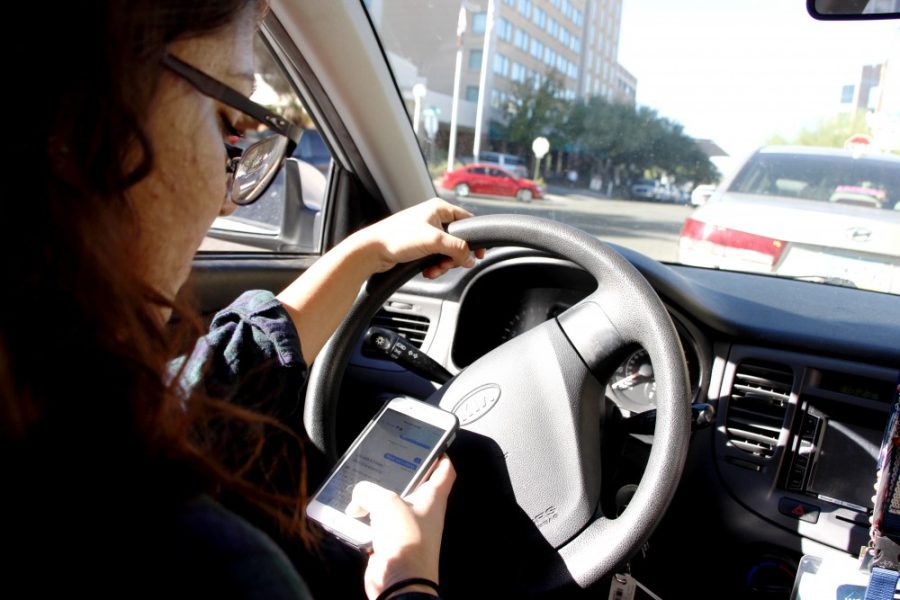The Tucson City Council passed a texting ban earlier this year and is now looking into expanding the ordinance to include banning all hand-held device use in a moving vehicle.
The council’s plan to prohibit the use of hand-held mobile devices while driving may be flawed though, according to Tim Leggett, an accident reconstruction engineer.
There isn’t a lot of difference between holding your hand up to your ear and using a hands-free device in terms of driver impairment, according to Leggett.
“The issue is not that you have one hand on the wheel with a hand-held device,” Leggett said. “The issue is that your mind is not focused on the road because of the conversation you’re having.”
RELATED: Pima County texting ban is now in full effect
Leggett said a conversation with a passenger is on the same level of distraction as a phone conversation.
“The studies show that you’re really impaired if you’re engaged in any conversation,” Leggett said. “If a guy pulls out from a stop sign your brain takes .7-1.5 seconds to respond, this time is elongated when your brain is occupied.”
Jacob Lopez, a veterinary science sophomore, has a 40-minute commute to and from the UA.
“I’ve seen a lot of distracted driving since I’m on the road quite a bit,” Lopez said. “I’d say most drivers on the road are distracted in some way, and I’ve seen a few crashes.”
Leggett said in his collision reconstruction experience, once you get into an accident, the opposing side will be able to check your phone records.
“They can see if you were texting or having a conversation while driving,” Leggett said.
Leggett said an all-out cell phone ban would be difficult for law enforcement to apply.
“I don’t see how the police would be able to enforce something like this,” said Jordan Grant, a theatre arts sophomore who has a 30-minute commute. “But if there’s a way, I think this could be a good idea.”
Grant said she has seen her fair share of collisions.
“The amount of collisions seems to be better these days, but the amount of people distracted on their phones is pretty scary,” Grant said.
Leggett addressed the misconception that the amount of collisions being reduced means using one’s phone while driving is safe.
“What people are arguing is that the use of cellphones has increased 1,200 percent since 2000 and the overall accident rate has dropped,” Leggett said. “But what they’re forgetting is that we do an amazing job at creating safer cars, intersections and freeways.”
RELATED: UA study analyzes the hidden dangers behind Pokémon Go
The risk of car collisions is higher among younger drivers than any other age group, according to the Centers for Disease Control and Prevention.
“In a lot of states there are rules about young drivers only being allowed to have one other younger person with them,” Leggett said.
Grant said banning the use of hand-held devices would benefit UA students.
“I think this ban could save lives and make roads safer in Tucson,” Grant said. “The number of younger people using their phones in the car is really too high.”
The issue of using your phone while driving is more wide-spread than what the numbers show, according to Leggett.
“Arizona has lagged behind on these kinds of laws, but Tucson is on the right track,” Leggett said. “The first step is to ban talking on the phone, but the next step would be to ban conversations altogether if they really want to prevent collisions.”
Follow Jessica Blackburn on Twitter.








